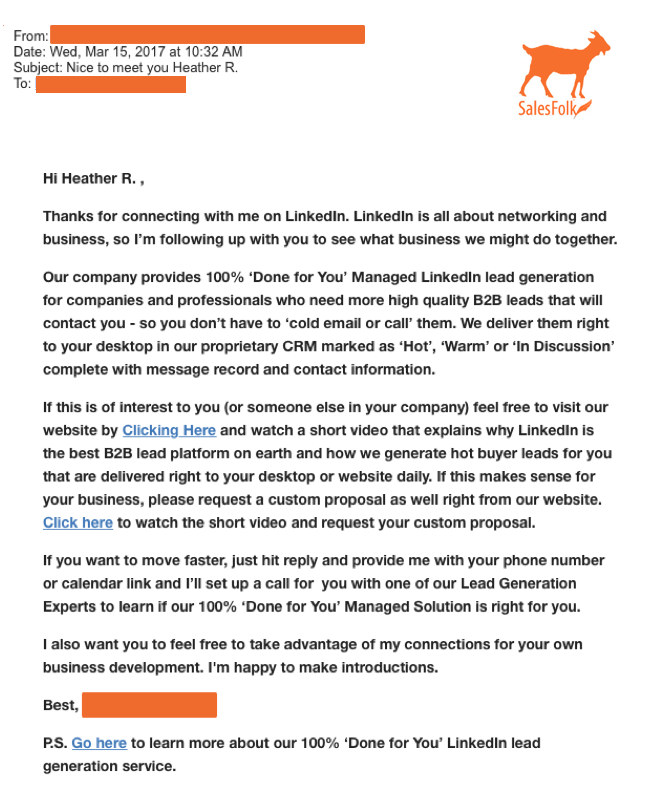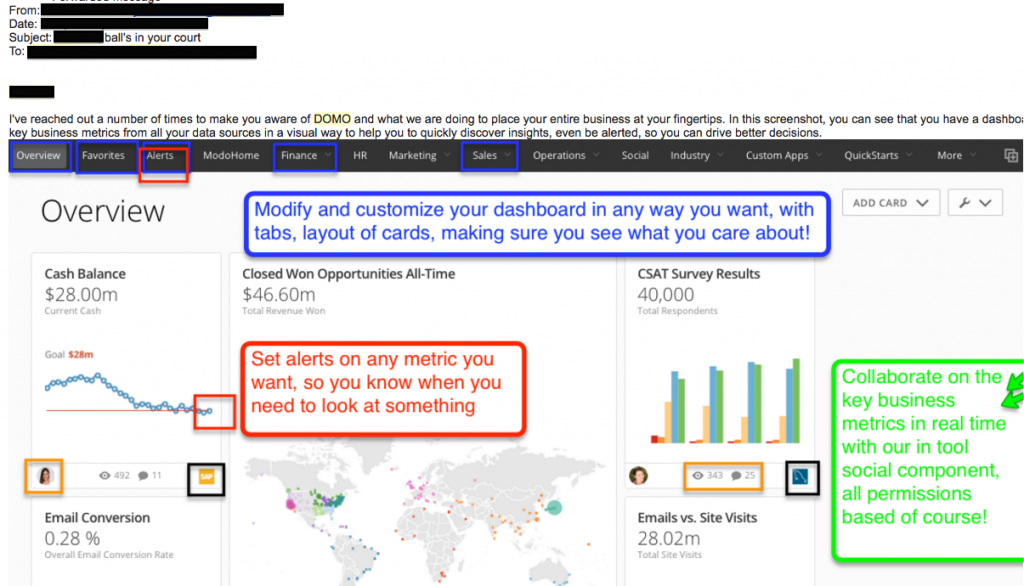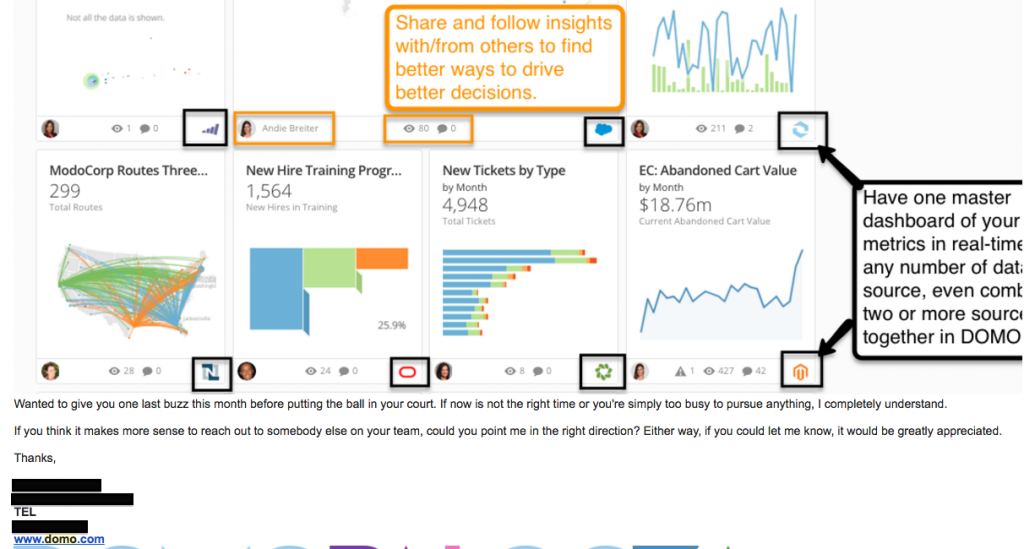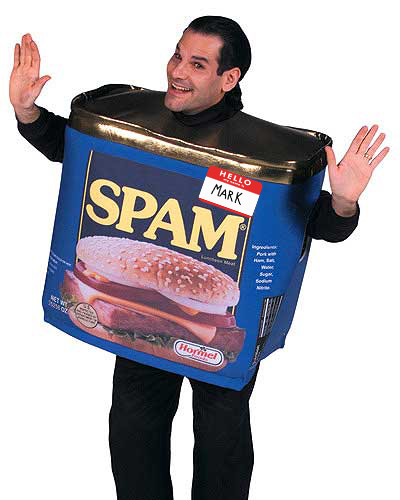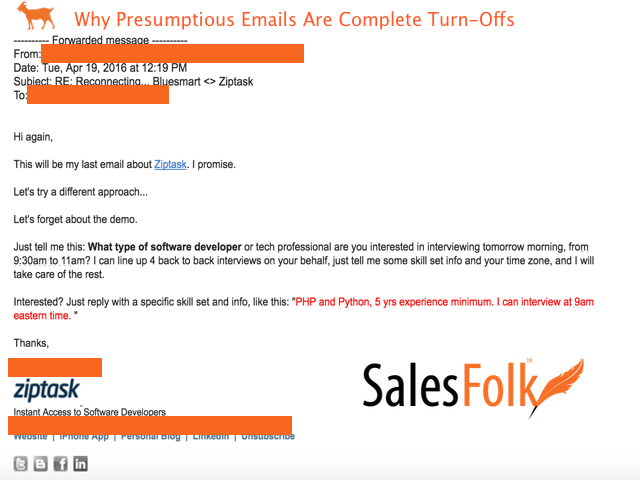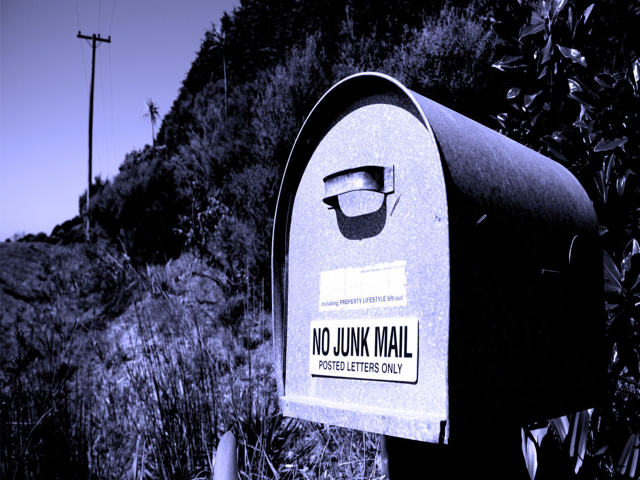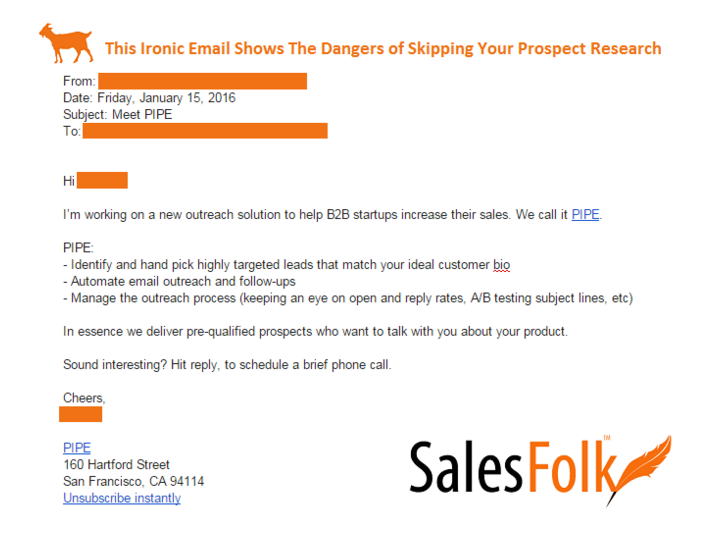Sales emails are not marketing emails. This sounds simple enough, but you wouldn’t believe how many sales emails I see in my inbox that resemble long-winded marketing newsletters. And I’m guessing they’re also in yours
So what’s the difference between the two?
Cold emails, as the name suggests, are sales emails sent without any prior connection or context in the hopes of starting a conversation with a potential customer. By contrast, most marketing emails—often referred to as “drip nurture emails” or “warm emails”—are meant to educate their audience while building awareness and rapport over a longer period of time.
For cold emails to even have the slightest chance of working, you need to understand some key ways they differ from marketing newsletters. Pay attention to these 6 cold-email tenets if you want to succeed with your outbound sales goals:
1. Nobody opts into cold emails.
People generally opt in to receive marketing newsletters, but no one chooses to get cold emails. This simple fact is one of the most important differences between the two.
2. Cold emails arrive without context.
Since you opted into marketing emails, you generally expect to receive information. Whether you attended a webinar or signed up to receive a company’s latest best practices, you already have some context as to who this company is. People sending sales emails don’t have this advantage. In many cases, a cold email might be the first time the recipient is ever hearing about you or your company. Likewise, you haven’t yet earned their trust or attention yet.
3. The best cold emails lead to offline relationships.
While marketing emails sometimes focus on upcoming events and conferences, for the most part, involvement with them remains on the computer screen. In contrast, great cold emails capture their recipients’ attention and build a “virtual rapport” that leads to offline conversations—phone calls, coffee meetings, dinners. In that way, everything about your cold email should take this long-term goal into account.
4. Cold emails don’t brag.
A line like, “Our groundbreaking new software will change your employee’s lives” is acceptable in a marketing email. In a cold email, it will make you look really obnoxious and self-promotional to a stranger. Instead, collect interesting statistics and testimonials about your offering, and let them do the talking for you. When you have a truly compelling pitch, you don’t need to dress it up with bragging.
5. Cold emails are designed for individual recipients.
Your recipient doesn’t want to feel like they’re one of 1000 people getting the same email. Given that, your cold email should include a field for their first name, at the bare minimum. That way, when Josh at ACME sees his name instead of “Dear Sir” at the top of the message, he’ll feel a greater sense of connection to you and be more likely to read on.
6. Simple design speaks volumes in cold email.
Email newsletters tend to include graphics, bright colors, bullet-point lists, lots of links, and unusual fonts. Avoid all of these things when sending cold emails, as they’ll only distract the recipient from the main message—how you can help solve their business problems. Not to mention, they signal to recipients that your email to them is completely mass.
Your parents would probably be pretty skeptical that you wrote them a personal message if you sent them a crazy colorful HTML email asking how their week was. Your prospects are the same, so don’t do that to them either.
How do you keep your sales emails from turning into marketing? Please share your tips and tricks below!

